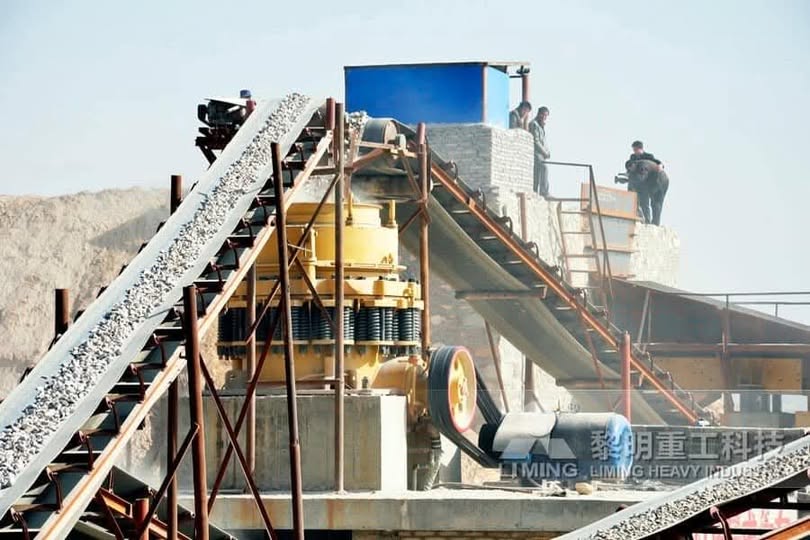Spring Cone Crusher for Ore Processing Lines
In mineral processing lines, crushing efficiency directly impacts operational profitability. The spring cone crusher, a cornerstone of secondary and tertiary crushing, offers unparalleled reliability for hard-rock ores like iron, copper, and gold. This article explores its engineering advantages, technical specifications, and best practices for integrating spring cone crushers into ore processing workflows.
How Spring Cone Crushers Work
Spring cone crushers utilize a rotating mantle and concave liner to compress materials. Key components include:
- Spring Safety System: Automatically releases tramp metal to prevent mechanical damage.
- Adjustable Crushing Chamber: Enables precise control of output size (5-60mm).
- Gyrating Spindle: Generates compressive force for effective fragmentation of abrasive ores.

Key Advantages for Ore Processing
- High Crushing Efficiency
- Achieves 30-50% higher throughput compared to hydraulic cone crushers for mid-hard ores.
- Uniform particle size distribution improves downstream grinding efficiency.
- Low Operational Costs
- Spring protection reduces unplanned downtime by 65%.
- Energy consumption: 15-20% lower than comparable models.
- Adaptability
- Processes diverse ores: magnetite (Fe₃O₄), chalcopyrite (CuFeS₂), and hematite (Fe₂O₃).
- Handles feed sizes up to 300mm with 15-20% moisture content.
- Durability
- Manganese steel liners withstand abrasive wear in copper porphyry processing.
- Operational lifespan: 8-12 years with proper maintenance.
Applications in Ore Processing Lines
- Iron Ore Beneficiation
- Crushes hematite to 20-30mm for magnetic separation.
- Case Study: Australian mine achieved 23% energy savings using PYD-2200 units.
- Copper Concentrator Plants
- Processes chalcopyrite at 250 TPH with 85% passing 12mm.
- Gold Ore Pre-Treatment
- Reduces quartz-hosted gold ore to 8-15mm for cyanidation.
Maintenance Best Practices
- Daily Checks: Monitor spring tension and lubrication (ISO VG 320 oil recommended).
- Monthly Tasks: Inspect liner thickness (replace at ≤65% wear).
- Annual Overhaul: Rebuild eccentric bushings and check spindle alignment.
Why Choose Spring Cone Crushers?
- ROI: Payback period ≤14 months for 500 TPH operations.
- Flexibility: Compatible with jaw crushers and ball mills in multi-stage circuits.
- Global Standards: CE and GOST certifications for international projects.
Conclusion
Spring cone crushers remain vital for cost-effective ore size reduction in today’s competitive mining sector. By selecting models with advanced wear protection and automated adjustment systems, operators can maximize productivity while minimizing lifecycle costs.
- > Jaw Crusher with a Capacity of 80 Cubic Meters Per Hour: Applications and Benefits
- > Mobile Jaw Crusher for Gold Mining in Chile: Enhancing Efficiency in Ore Processing
- > Efficient GZG Series Vibrating Feeder for Metallurgy: A Key Component in Modern Industrial Processes
- > PY Series High-Efficiency Spring Cone Crusher: Enhancing Crushing Efficiency and Durability
- > Applications of Mobile Cone Crushers in Secondary Crushing for Sand and Gravel Aggregate Plants
- > The Role of PF Impact Crushers in Kazakhstan’s Mining Industry
- > Germany Make 200 TPH Stone Crusher
- > Feasibility of Using an Impact Crusher for Fly Ash and Slag
Hot Product


Online




Message
